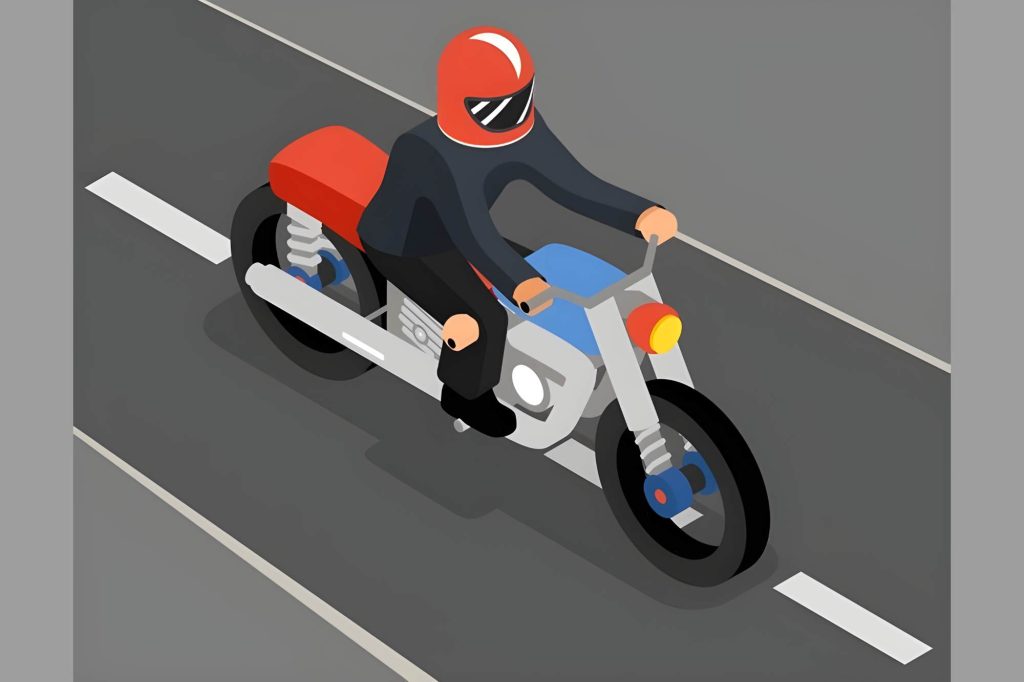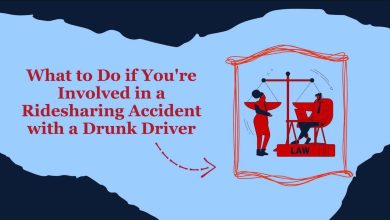Motorcycle lane splitting is one topic that sparks various opinions and discussions among road users. A good number of people (mostly bikers) argue that, when done right, it can be the safest way to get out of a traffic jam fast.
The bikes can swerve through gridlocked areas, using the space between lanes to progress through traffic. As a result of this, other vehicle users have more space to move forward.
On the flip side, some people counter this claim. Their primary argument is based on the rate of motorcycle accidents that occur due to lane splitting. Victims of lane-splitting accidents have only one course of action moving forward–filing a motorcycle accident claim.
Table of Contents
What Is Motorcycle Lane Splitting?
Motorcycle lane splitting is like that daring move in a video game where the character zips through tight spaces to get ahead. It’s when a motorcyclist slips between two lanes of crawling or stopped vehicles, especially in those bumper-to-bumper traffic jams.
It surely sounds simple, but it’s like playing a high-stakes game of chess. Motorcyclists have to be on their A-game, dodging cars, road barriers, and whatever else comes their way. Their precision and focus have to be top-notch because one wrong move could spell disaster. That’s why experience and skill are key; you can’t just hop on a bike and expect to pull it off safely.
Is Lane Splitting Legal?
Well, it depends on where you are. Take California, for instance. Here, lane splitting is officially allowed, but with some rules. Motorcyclists can’t go more than 10 miles per hour faster than the flow of traffic, and they can’t hit speeds over 30 miles per hour in total.
But in many other places, it’s a big no-no. Critics argue it’s a recipe for disaster, while supporters claim it’s the ultimate traffic hack that can ease traffic congestion and stop bikes from staying too long in the sun and overheating.
Figuring out if lane splitting is legal can be tricky for both bikers and car drivers, especially when the rules change from place to place. This confusion can be dangerous for everyone on the road.
Since safety is highly important, policymakers need to take a second look at lane-splitting laws and make them clear and consistent. This way, everyone can cruise the streets feeling safe and knowing what to expect.
Consequences of Lane Splitting
Here are some of the consequences of lane splitting:
The risk of accidents
Lane splitting can be a gamble, both for riders and other drivers. While a study claims it might lessen the severity of some accidents for bikers, it also stresses the need for caution and obeying speed limits. Remember, taking risks on the road puts everyone in danger.
Fines
In places where lane splitting is illegal, riders face fines, tickets, or even losing their license. The lack of clear rules makes things even messier, causing confusion and clashes between riders and cops.
Stereotyping and profiling
It’s not just about legal trouble. Lane splitting can also affect how other drivers see bikers. Some might feel scared or annoyed when motorcycles weave between lanes, which can fuel road rage. Finding a solution means keeping everyone safe and fostering respect among all road users.
Tips for Safe Lane Splitting

For motorcyclists considering or currently practicing lane splitting, safety should be the top priority. Here are some essential tips to lane split safely where it is legal:
- Be aware of your surroundings: Constantly scan the road for potential hazards, including other vehicles, pedestrians, or unexpected obstacles.
- Adhere to speed limits: Stick to a reasonable speed differential compared to the surrounding traffic. Excessive speed increases the risk of accidents and poses a danger to both the rider and other road users.
- Choose optimal conditions: Lane splitting is best suited for slow-moving or stationary traffic. Avoid attempting this maneuver in high-speed or unpredictable traffic situations.
- Use your signals: Indicate your intentions to other road users by using your turn signals. This helps drivers anticipate their movements and reduces the risk of accidents.
- Maintain visibility: Ensure that you are visible to other road users by using your headlights, wearing reflective gear, and positioning yourself where drivers can easily spot you.
Wrapping Up
Lane splitting is both risky and confusing, with different rules everywhere. It comes with ups and downs for riders and drivers as well.
Knowing the rules, the risks, and how to do it safely is key. As roads get busier, riders need to figure out how to efficiently handle lane splitting for everyone’s safety.
Please explore our site for more exciting content if you like this article.





